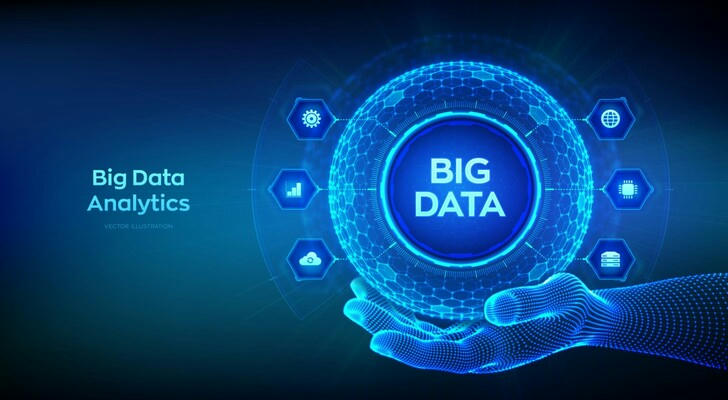The Evolution and Impact of Big Data Analytics in Global Education
Big data analytics has emerged as a cornerstone of modern technological advancement, reshaping industries and academic landscapes alike. With its ability to transform vast, unstructured datasets into actionable insights, this field has become integral to decision-making in sectors ranging from healthcare to finance. International educational institutions have responded by designing cutting-edge courses that equip students with both theoretical knowledge and practical expertise. Below, we explore the key components of these programs, their real-world applications, and the challenges they address.

Core Technologies Driving Big Data Analytics
1. Data Acquisition and Storage
The foundation of any big data analysis lies in efficient data collection and storage. Modern courses emphasize distributed systems like Hadoop HDFS and cloud-based solutions (e.g., Amazon S3) to manage petabytes of data from diverse sources, including IoT devices, social media, and transactional systems. Students learn to navigate NoSQL databases (e.g., MongoDB) and distributed file systems, ensuring scalability and reliability in handling heterogeneous data types.
2. Data Processing and Cleaning
Raw data often contains noise, missing values, or redundancies. Courses teach advanced techniques for data preprocessing, such as outlier detection, standardization, and transformation using tools like Python and R. For example, Google's Data Analytics Professional Certificate program includes modules on data cleansing and quality assurance, enabling learners to prepare datasets for accurate analysis.
3. Analytical Techniques and Machine Learning
From descriptive statistics to predictive modeling, students master algorithms like regression, clustering, and natural language processing. The integration of machine learning frameworks (e.g., TensorFlow) allows for pattern recognition in financial forecasting or medical diagnostics. Case studies, such as optimizing surgical outcomes through patient data analysis, highlight the practical relevance of these methods.
4. Visualization and Business Intelligence
Effective communication of insights is critical. Courses incorporate tools like Tableau and ggplot2 to create interactive dashboards and visual narratives. For instance, UCL's summer program trains students to present findings through data-driven storytelling, a skill highly valued in corporate and research settings.

Real-World Applications Across Industries
1. Healthcare and Biotechnology
Big data analytics enables breakthroughs in personalized medicine and drug discovery. Courses like those offered by Cambridge University focus on genomic data analysis and AI-driven drug delivery systems, bridging the gap between research and clinical practice.
2. Financial Services
Risk management and fraud detection are revolutionized through predictive analytics. Programs such as the MSc in Risk Management Science and Data Analytics at the Chinese University of Hong Kong teach students to build models for credit scoring and algorithmic trading.
3. Environmental Sustainability
Green energy systems and climate modeling rely on big data. The University of Melbourne's courses explore renewable energy optimization using real-time sensor data, aligning with global efforts to combat climate change.
4. Smart Cities and IoT
Urban planning and traffic management benefit from real-time data streams. Singapore's SkillsFuture initiative includes modules on IoT integration, preparing learners to design smart infrastructure solutions.

Challenges and Ethical Considerations
1. Data Privacy and Security
With the rise of GDPR and other regulations, courses now emphasize ethical data handling. Techniques like federated learning and differential privacy are taught to balance utility with confidentiality.
2. Scalability and Computational Limits
Handling exabytes of data requires expertise in distributed computing frameworks like Apache Spark. Students engage in projects simulating real-world scenarios, such as processing social media trends in real time.
3. Interdisciplinary Collaboration
Big data problems often span multiple domains. Programs like MIT's Data Science and Big Data Analytics encourage collaboration between computer scientists, economists, and biologists, fostering holistic problem-solving skills.
The Future of Big Data Education
1. Integration of AI and Generative Models
Emerging trends include the use of large language models (LLMs) for automated data labeling and synthesis. Conferences like IEEE BigData 2025 spotlight innovations in AI-driven analytics, offering students exposure to cutting-edge research.
2. Focus on Green Computing
Sustainable data practices are gaining traction. Courses now address energy-efficient algorithms and carbon footprint reduction, aligning with global ESG goals.
3. Hybrid Learning Models
Platforms like Coursera and edX offer micro-credentials alongside traditional degrees. Google's certification program, for example, provides flexible, project-based learning paths accessible to non-technical professionals.
Conclusion
The global demand for skilled data analysts continues to surge, driven by the digital transformation of industries. International courses, from Ivy League universities to online platforms, are evolving to meet this need, blending technical rigor with ethical awareness. As technologies like quantum computing and edge analytics mature, the next generation of data professionals will play a pivotal role in shaping a data-driven future.
References
- IT Management London TFE's Big Data Analysis Course (2023)
- Hong Kong Data Science Programs (2024)
- Google Data Analytics Certificate (2025)
- IEEE BigData 2025 Conference (2025)
- Cambridge University Summer Program (2025)
- GitHub's BigData Technical Overview (2025)
- Data Pipeline Analysis (2024)
